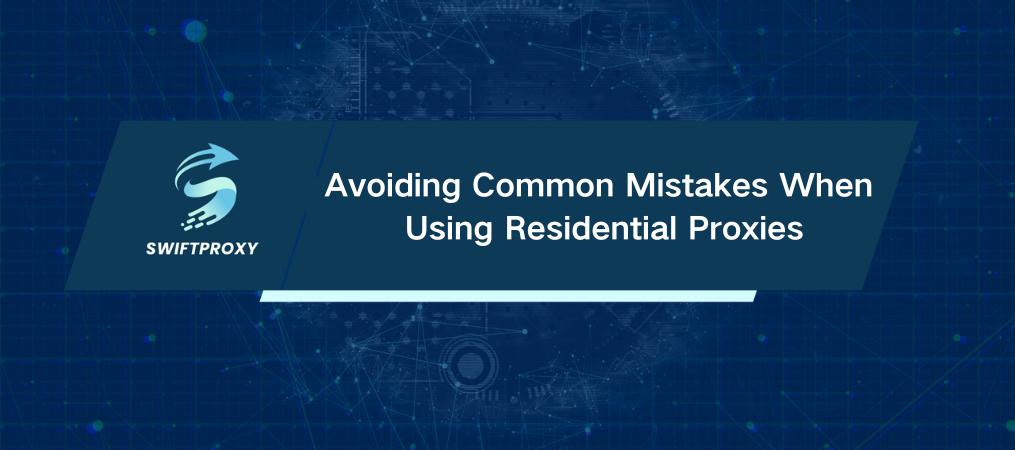Avoiding Common Mistakes When Using Residential Proxies

Residential proxies are a go-to tool for anyone trying to access geo-restricted content, scrape data from complex websites, or mask their identity while browsing. They're considered highly anonymous, and many users swear by them for both personal and business needs. But using them isn't always as simple as just picking the first provider you find online.
In fact, there are some common pitfalls that can trip up even the most experienced users. So, let's dive into the main mistakes you should watch out for and how to avoid them, ensuring you get the most out of your residential proxies.
What Exactly Are Residential Proxies
Residential proxies are IP addresses that come from real users. These addresses are assigned by legitimate ISPs (internet service providers), acting as intermediaries between you and the websites you want to visit. The beauty of this setup? Your original IP address remains hidden, offering privacy and security.
They rotate automatically, meaning every time you make a new request, your IP can change, making these proxies very hard to detect or block. This also explains why they tend to be pricier than datacenter proxies. If you're targeting specific locations, you'll appreciate their wide global reach. They're ideal for scraping large amounts of data or when you need high IP diversity.
But let's not get ahead of ourselves. Before diving into the deep end of residential proxies, it's essential to understand the common mistakes people make when using them.
Mistake 1: Not Recognizing the Right Time for Residential Proxies
Before you dive in, ask yourself: Do I actually need residential proxies? It might seem like a no-brainer, but depending on your task, other types of proxies—like datacenter or mobile proxies—might be better suited for the job.
Here's how to figure it out:
Scraping complexity: If you're scraping a high-traffic site and getting blocked, you probably need residential proxies. Why? These proxies are tougher to detect and block, making them ideal for scraping well-protected websites.
Data size: If you're scraping a ton of data, be prepared for higher costs with residential proxies. If you just need basic data, consider cheaper alternatives like datacenter proxies.
Speed vs. anonymity: Residential proxies generally operate slower than datacenter proxies. So if you need real-time data, or speed is a key factor, stick with datacenter proxies. But for precise location targeting or tougher restrictions, residential proxies will give you the edge.
Mistake 2: Overcomplicating Your Setup With Both Residential and Datacenter Proxies
Some people think they need to mix both residential and datacenter proxies in their toolkit, but this often leads to unnecessary costs. these proxies serve different purposes, so using both can drain your budget without providing much added value.
When to go with residential proxies: Use them if you need high anonymity, access to geo-restricted content, or to scrape websites that actively block traffic.
When to use datacenter proxies: They're faster and cheaper, perfect for tasks like general browsing, or if you don't need high anonymity or location targeting.
Instead of doubling up, focus on the type of proxy that fits your needs. You'll get better results for less money.
Mistake 3: Selecting the Wrong Proxy Provider
Choosing a reliable proxy provider is crucial. If you're stuck with a provider that offers a limited proxy pool or unreliable IPs, it'll be a constant headache. So, how do you avoid this?
Here's what you should look for in a top-tier residential proxy provider:
Proxy pool size: A larger pool means better availability and less chance of hitting blocked IPs.
Location coverage: Ensure the provider offers proxies from the countries or regions you need. For highly targeted scraping, precise location coverage is key.
Ethically-sourced proxies: Make sure the provider uses real users' IPs, sourced ethically. Shady practices can lead to poor performance and even legal trouble down the line.
Do your research and make sure the provider aligns with your needs—this is not a decision to rush.
Final Thoughts
Residential proxies can be a game-changer, but only when used correctly. By avoiding these common mistakes and choosing the right provider, you'll have a powerful tool at your disposal.

















































